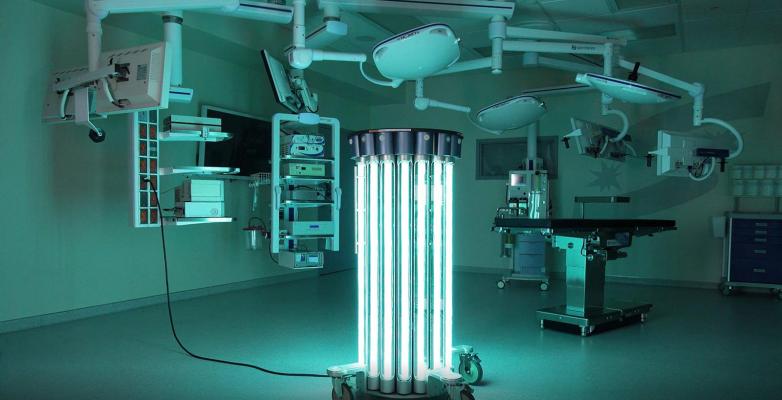JCHD adds sanitizing robot
By Michael Brooks
Staff Writer
The Jackson County Hospital District has a program in place to disinfect and sanitize but because of the new reality we live in, even more needed to be done to ensure the absolute best disinfecting practices were being utilized. In order to disinfect better, the JCHD has introduced Iris.
Iris is a cleaning robot that will use ultraviolet light for Ultraviolet Germicidal Irradiation. UVGI is the use of ultraviolet energy to kill or inactivate viral, bacterial, and fungal species.
“Today's UVC lamps are fully automated with complete safety features in place,” Said UVC expert Michael Czechowskyj of Skytron, the company that made Iris. “You literally plug it in, start it up and leave the room to go about your day.”
Iris also allows for someone to immediate enter once it is finished cleaning, and Iris is a more thorough cleaner than most other methods that are available.
“Once the machine is done, it's perfectly safe for someone to enter immediately,” Czechowskyj. “Not all sprayers and foggers can let you do that. And under the wait period, especially with ozone foggers, there's no ongoing chemicals that you're spraying or ongoing chemicals to buy either.
“Another difference is the coverage; with spray sanitizers, the sprayer can often miss areas, or not spray enough solution in a specific are a that needs it. This manual process of spraying leaves so much room for error and uncertainty. Irradiating a room with a UVC system does it all for you. It calculates the treatment time, intensity and because it’s light, it gets into all the nooks and crannies to ensure a complete application.”
Providence Holy Cross Medical Center in Mission Hills California provided information detailing why a cleaning robot is a excellent item for hospitals to have.
“Hospital-acquired infections (HAIs) are a significant contributor to excess patient length of stay, morbidity, and mortality in acute care hospitals. Contaminated patient environments play a key role in the transmission of numerous HAI-causing multi-drug resistant organisms and a recent CDC sponsored study confirmed a contaminated hospital environment is a modifiable risk factor.”
For this reason, robots such as Iris are becoming more and more common. Providence stated the UVC disinfectant robots are much more efficient, and provided statistics to back this claim up.
During a testing period, 8,449 UVC disinfections were completed, an average of just over 23 per day. The study states that the “faculty-wide incident rates on all target organisms was 19.18 percent lower during the testing period compared to baseline (normal) days.”
Making sure patients don’t get hospital-acquired infections will bring shorter hospital stays, which will in turn bring costs down.
The study shows 185 HAI stays during the testing period, but factoring in the 19.18 percent, the expected number of HAI hospital stays would have been 233, which comes up to an estimated savings of $662,904, a number that will quickly make Iris’s price tag of $42,000 seem minimal, and Brad Keck, Direct Sales Representative for Skytron says the life expectancy of these robots is typically more than seven years.

